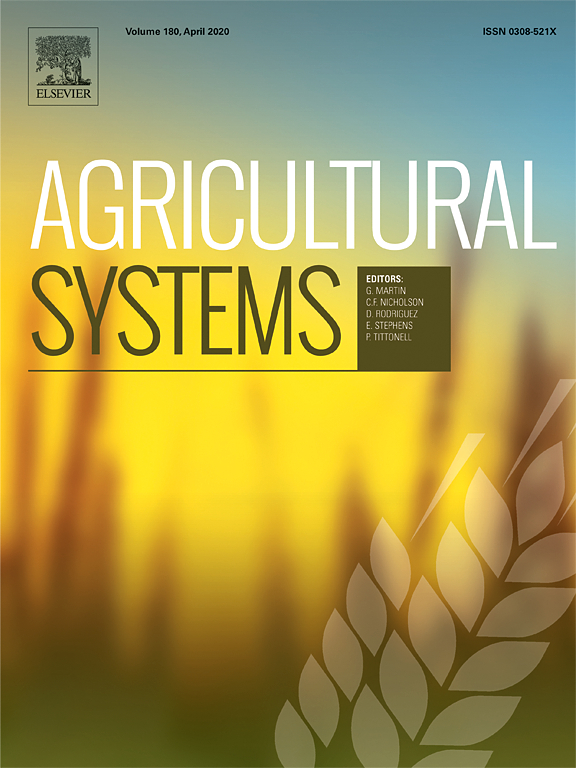Ver ítem
- xmlui.general.dspace_homeCentros Regionales y EEAsCentro Regional Patagonia NorteEEA BarilocheArtículos científicosxmlui.ArtifactBrowser.ItemViewer.trail
- Inicio
- Centros Regionales y EEAs
- Centro Regional Patagonia Norte
- EEA Bariloche
- Artículos científicos
- Ver ítem
Functional farm household typologies through archetypal responses to disturbances
Resumen
Methods to construct farm household typologies may differ in their approach but they share a common feature: they rely mostly on structural farm data. Methods to build functional typologies are far less abundant. Households or communities are complex social-ecological systems that often exhibit patterns in their response to disturbances (e.g., droughts, floods, price shocks, policy change). We propose building functional typologies – classifiable
[ver mas...]
Methods to construct farm household typologies may differ in their approach but they share a common feature: they rely mostly on structural farm data. Methods to build functional typologies are far less abundant. Households or communities are complex social-ecological systems that often exhibit patterns in their response to disturbances (e.g., droughts, floods, price shocks, policy change). We propose building functional typologies – classifiable ´behaviours´ of rural actors – using archetype analysis to categorise such responses and identify salient behaviours. We illustrate this approach by examining the response of rural households to recurrent
droughts in northern Patagonia, Argentina, as revealed by 23 in-depth interviews about perceptions and strategies concerning droughts. Using the algorithm from Mørup and Hansen (2012), and the corrected Akaike decision rule, we identified three archetypes (A–C) that represented three distinct aggregated responses of households to droughts. Archetype A presented variable degrees of resistance to droughts (production losses<40%), avoidance and diversification, whereas archetype B exhibited tolerance (higher losses) and some degree of transformability (off-farm income). Archetype C farms exhibited high levels of vulnerability, if some
degree of tolerance to high losses, but no real adaptive strategy to speak of. Such pattern could not have been identified through the more commonly used typology building methods such as using multivariate and clustering techniques. By allowing to combine qualitative and quantitative information, and to deal with a relatively small number of observations, archetype analysis appears as highly suitable to delineate functional farm household typologies.
[Cerrar]

Autor
Tittonell, Pablo Adrian;
Bruzzone, Octavio Augusto;
Solano-Hernández, A.;
López-Ridaura, Santiago;
Easdale, Marcos Horacio;
Fuente
Agricultural Systems 178 : 102714 (Febrero 2020)
Fecha
2020-02
Editorial
Elsevier
ISSN
0308-521X
Formato
pdf
Tipo de documento
artículo
Palabras Claves
Derechos de acceso
Restringido
 Excepto donde se diga explicitamente, este item se publica bajo la siguiente descripción: Creative Commons Attribution-NonCommercial-ShareAlike 2.5 Unported (CC BY-NC-SA 2.5)
Excepto donde se diga explicitamente, este item se publica bajo la siguiente descripción: Creative Commons Attribution-NonCommercial-ShareAlike 2.5 Unported (CC BY-NC-SA 2.5)

